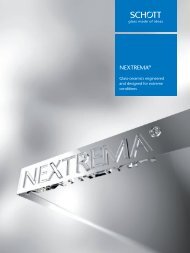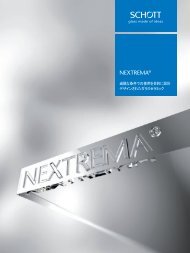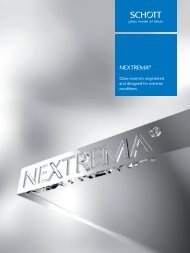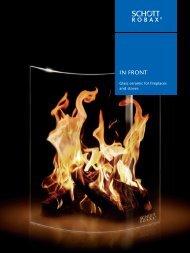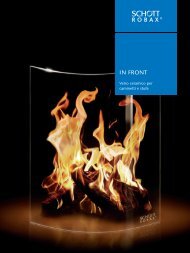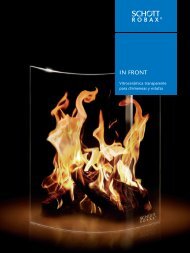SCHOTT Technical Glasses
Apart from its application in optics, glass as a technical material has exerted a formative influence on the development of important technological fields such as chemistry, pharmaceutics, automotive, optics, optoelectronics and information technology. SCHOTT Technical Glasses offers pertinent information in concise form. It contains general information for the determination and evaluation of important glass properties and also informs about specific chemical and physical characteristics and possible applications of the commercial technical glasses produced by SCHOTT. With this brochure, we hope to assist scientists, engineers, and designers in making the appropriate choice and make optimum use of SCHOTT products.
Apart from its application in optics, glass as a technical material has exerted a formative influence on the development of important technological fields such as chemistry, pharmaceutics, automotive, optics, optoelectronics and information technology. SCHOTT Technical Glasses offers pertinent information in concise form. It contains general information for the determination and evaluation of important glass properties and also informs about specific chemical and physical characteristics and possible applications of the commercial technical glasses produced by SCHOTT. With this brochure, we hope to assist scientists, engineers, and designers in making the appropriate choice and make optimum use of SCHOTT products.
You also want an ePaper? Increase the reach of your titles
YUMPU automatically turns print PDFs into web optimized ePapers that Google loves.
21<br />
lg ρ in Ω ⋅ cm ––><br />
Temperature in °C ––><br />
13<br />
200 300 400 500 700<br />
12<br />
11<br />
10<br />
9<br />
8<br />
7<br />
6<br />
5<br />
4<br />
N 16 B<br />
3<br />
2.5 2.0<br />
<br />
16<br />
100 200 300 400 500 700<br />
15<br />
Electrically conducting and transparent layers can be produced<br />
on glass by using semi-conducting oxides (e.g., of<br />
tin and indium). The surface resistance range is 1 – 100 Ω per<br />
square.<br />
14<br />
13<br />
12<br />
11<br />
10<br />
9<br />
b<br />
a<br />
4.3 Dielectric properties<br />
The dielectric constant ε r describes the relative increase in<br />
capacitance by introducing a polarizable dielectric into e.g<br />
a plate capacitor previously in vacuum.<br />
lg ρ in Ω ⋅ cm ––><br />
8<br />
7<br />
6<br />
5<br />
4<br />
3<br />
2<br />
3.5 3.0 2.5 2.0<br />






